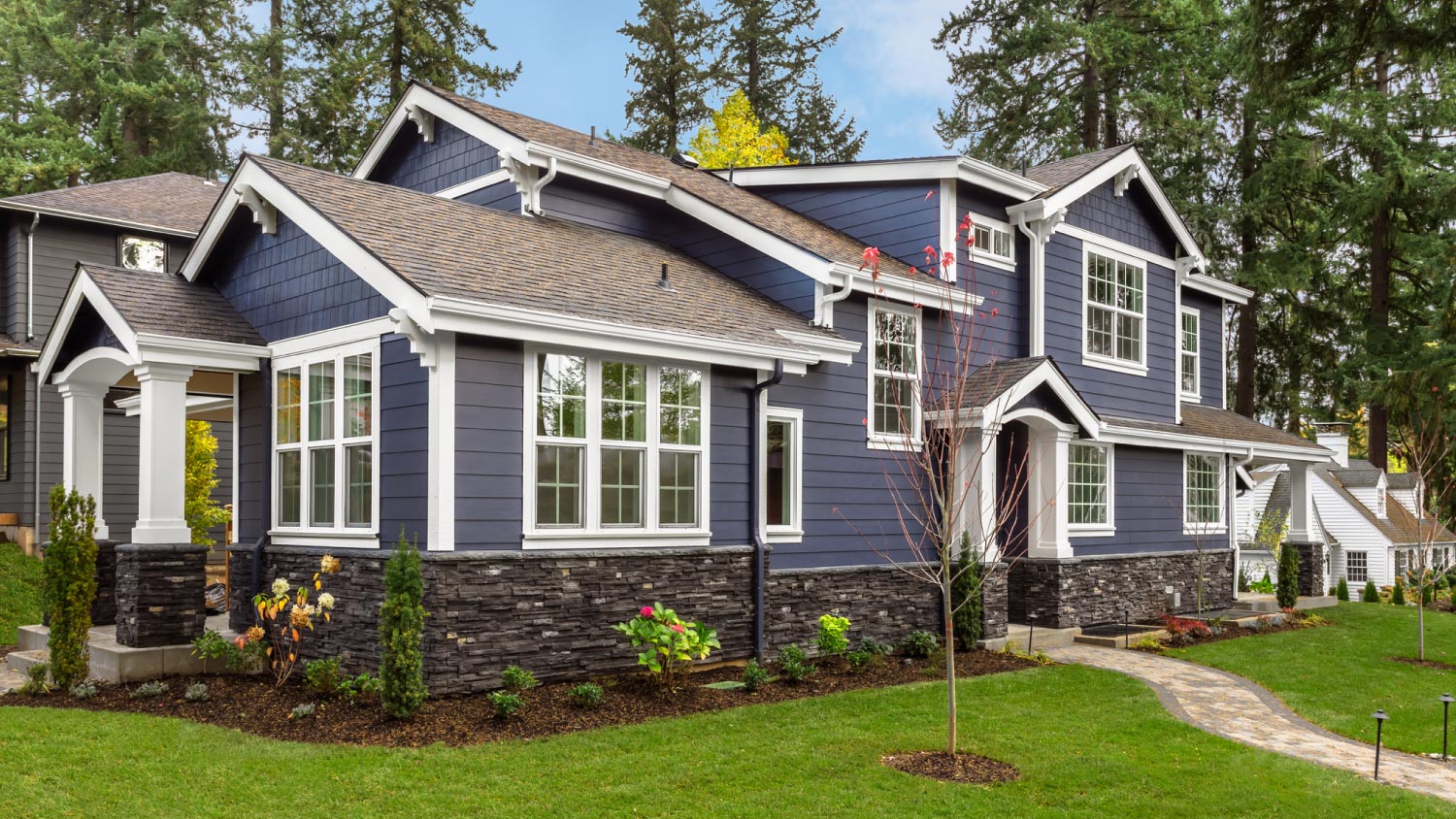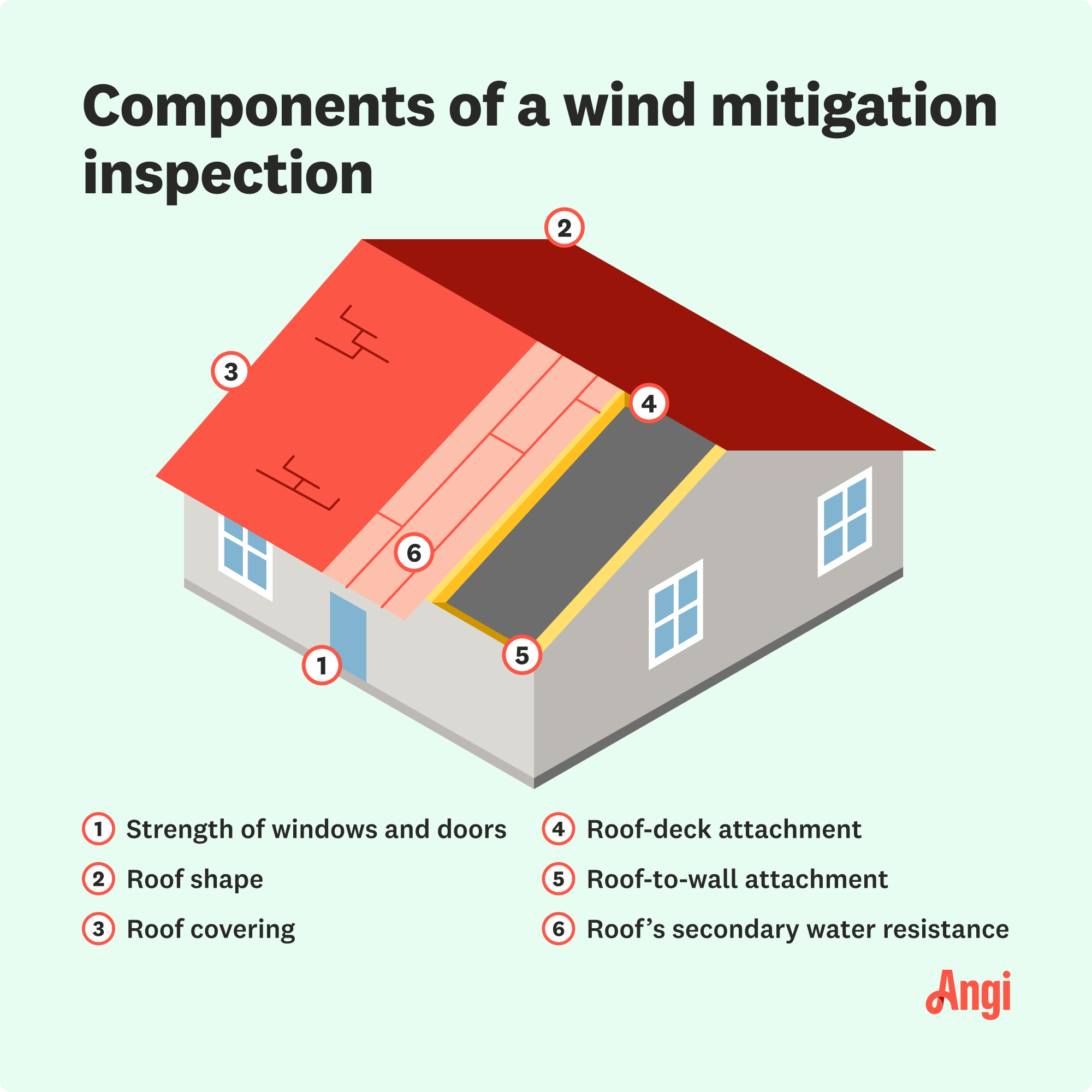
Dealing with a visibly damaged roof or leak? Learn about roof repair costs in Columbus to see how much you’ll need to budget for a permanent solution.
Severe storms can cause major damage to your home, but wind mitigation can help


Wind mitigation helps your home withstand strong winds and storms.
The most important outcome of wind mitigation is a safer home.
By using wind mitigation tactics, you could also prevent costly property damage.
Wind mitigation may score you discounts on your insurance premiums.
From the warm, sunny days to the picturesque views, living in a coastal area is a dream for many people. However, some of these regions are also at a higher risk of tropical storms, hurricanes, and windstorms, all of which can wreak havoc on your house. Fortunately, there are ways to protect your home from the elements—and wind mitigation is a great place to start. But what is wind mitigation, exactly? We’ll walk you through the basics, including why it’s important and how it can help you save money on your insurance premiums.
Wind mitigation is the process of building (or upgrading) your home so it’s strong enough to withstand extreme winds. It involves several elements, including installing tough storm doors and windows, designing a windproof roof, and adding wind-rated garage doors.
If you live in a hurricane- or tornado-prone area (like the South or Midwest), wind mitigation is essential. It can help prevent severe damage to your house and keep your family safe, and it might help you secure more affordable homeowners insurance.

You might be wondering, “Do I actually need wind mitigation?” Here are some of the most important reasons to consider it.
Strong winds pose a major threat to your home, but with wind mitigation, you may be able to limit or prevent serious wind damage. Or, even if your house does sustain damage in a storm, you’ll probably pay a lot less to fix it.
Reducing your insurance premiums is one of the top reasons to install wind mitigation features. Depending on where you live and which insurance company you have, you may qualify for a lower rate if you pass a wind mitigation inspection. In Florida, for example, insurance companies are required to reduce your rate if you have certain wind mitigation measures in place.
When you live in a coastal or windy area, these companies understand they’re taking on a larger risk by insuring your house. That’s why they often offer discounts if you can prove that you’ve taken steps to reduce the risk of extreme storm damage—which can cost between $2,700 and $20,800 to fix.
More importantly, setting up your house for windstorm prevention will help keep you safer when a storm hits. In an emergency, concerns about property damage will be secondary to your family’s safety. If you have a wind-safe house, you’ll enjoy more peace of mind when the worst happens.
Before any storm, make sure your emergency supply is updated and adequate. FEMA and the American Red Cross recommend that every person have at least 72 hours of food, water, and portable power in case of emergencies—you should have more if you live in a hurricane- or tornado-prone area.

During a wind mitigation inspection (also called a windstorm mitigation inspection), a certified professional will visit your house and evaluate how much wind your home can take. They will look at several parts of your house, including your windows, doors, and roof. If you pass, provide the documentation to your insurance company. They may reward you with a less expensive premium as a result.
If you’ve been looking for companies that provide these inspections, you might have another common question: What’s the difference between a four-point and a wind mitigation inspection? Insurers often bundle these inspections, but they’re quite different. On the one hand, a four-point inspection examines your HVAC, plumbing, electrical, and roofing (the four points in the name), but a wind mitigation inspection merely assesses your home’s ability to prevent wind damage.
Wind mitigation inspections cost an average of $100, but you may be able to add a four-point inspection to your standard one for a total of $150 to $200.
If you’re unsure where to start with wind mitigation, here are a few methods to try.
As the name would suggest, storm windows and doors (also known as hurricane windows and doors) can endure harsh weather conditions without breaking or letting in water or debris. On average, storm windows cost between $4,200 and $19,850, while installing a storm door costs around $500 to $750 (including installation).
If you’re in a hurricane zone, installing storm shutters can help protect your doors and windows. There are many different types of hurricane shutters (including temporary and permanent options), but you’ll pay between $1,500 and $5,900 to install them.
In a storm, your roof is crucial in preventing wind, debris, and moisture from leaking into your home. For proper wind mitigation, your roof should have multiple slopes and a secondary water barrier beneath the shingles. If you aren’t sure what type of roof to install, get in touch with a local roofing company to discuss your options and pricing.
Installing strong and secure garage doors is another way to protect your home from windstorms. Look for wind-rated garage doors that won’t blow open during extreme weather. Otherwise, if your garage is exposed, it could let wind gusts in—leading to a buildup of pressure that threatens your home’s walls and roof.
As we’ve covered, your insurance company may offer a premium discount if you provide proof of a successful wind mitigation inspection. You’ll need to contact your insurer to find out how much the discount is and how to receive it. These discounts could mean your wind mitigation measures will eventually pay for themselves.
From average costs to expert advice, get all the answers you need to get your job done.

Dealing with a visibly damaged roof or leak? Learn about roof repair costs in Columbus to see how much you’ll need to budget for a permanent solution.

Learn about roof replacement costs in Columbus and what factors are at play to budget accurately and make sure you’re getting a fair price.

A metal roof can defend your home against Ohio’s varying weather conditions. Learn how much a metal roof costs in Columbus, OH.

Protecting your metal roof starts with the right roof insulation. Learn about the best underlayment for metal roofs to increase longevity.

Learning how to cut rafters correctly for your roof strengthens your building’s frame. We’ll explain everything you need to know, including the birdsmouth cut.

Understanding the styles and types of metal roofs available can help you make the best choice for your home. We’ll discuss the best options for metal roofs.